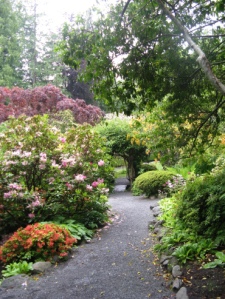
Sensing rather than seeing the columns of tall evergreen trees along the path, our small church family made its way in the dark toward the beach. We had come to celebrate Easter with a traditional sunrise service, however, winding our way through the woods in predawn darkness felt far from traditional. It felt humbling, even a bit perilous, to journey in the dark to the untamed shoreline of a coastal island so we could worship the risen Christ.
I couldn’t help but think about the two women making their way in the darkness to the tomb of Jesus. Not only were they surrounded by the gloom of the waning night, their hearts were also darkened with grief and loss. By the time they arrived at the garden, a thin gray light had begun to seep up from the horizon, revealing the darker forms of rocks and trees, and the looming cliff face where the tomb had been carved out.
Daybreak is a strange thing. It happens without measurable progress, beginning as a mere lessening of darkness until the moment when the sun edges over the horizon to flood all in its sphere with light and life. Perhaps for the two women coming to Jesus’ tomb, daybreak came as a herald of the dawning of a new era. In the increasing light of dawn they saw the stone rolled away from the tomb; the first rays of sunlight revealing its empty interior. Then to verify what they saw as reality, an angel said to them, “Why do you look for the living among the dead? He is not here; He has risen!” (Luke 24:5 NIV)
Could the beginning of each new day ever be the same for these women? With every sunrise the brilliant reality of Jesus’ resurrection would dawn anew in their hearts, the power of His indestructible life flooding theirs with light, joy and hope.
Once on the beach that Easter morning, our small congregation stood silently on the sand facing the ocean. With each wave whispering on the shore, the deep rose flush of dawn pried apart sea from sky until the whole expanse filled with the glory of God’s light. For those of us who rarely witnessed a sunrise, its beauty indelibly imprinted on our hearts the scripture recited by our pastor.
“The people walking in darkness have seen a great light; on those living in the land of the shadow of death a light has dawned. For to us a child is born, to us a son is given, and the government will be on His shoulders. And He will be called Wonderful Counselor, Mighty God, Everlasting Father, Prince of Peace.” (Isaiah 9:2, 6)
The whole earth is full of resurrection reminders. Each spring when new life emerges from dormant winter, each baby born from a dark womb, every morning sunrise breaking the hold of night, is a picture of rebirth. The resurrection of Jesus Christ has given us new life and the sure promise of eternity with Him. He has broken the bonds of death for all who believe in Him. His light has dawned.
“Let us acknowledge the Lord; let us press on to acknowledge Him. As surely as the sun rises, He will appear; He will come to us like the winter rains, like the spring rains that water the earth.” (Hosea 6:3)



